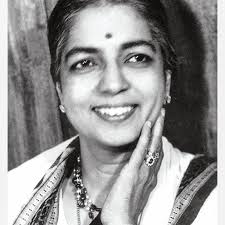Rukmini Devi Arundale: 7 Powerful Facts About Her Legacy and Impact on Indian Culture
Introduction
Rukmini Devi Arundale was a pioneering figure in the world of Indian classical dance, particularly Bharatanatyam. Her life story is one of grace, determination, and a deep commitment to preserving and promoting India’s rich cultural heritage. Through her passion for dance, her innovative ideas, and her tireless efforts to uplift traditional art forms, she transformed the landscape of Indian classical performing arts. This article takes a closer look at Rukmini Devi Arundale’s biography, daily life, impacts, historical significance, and her lasting legacy.
Biography
Born on February 24, 1904, in Madurai, Tamil Nadu, Rukmini Devi Arundale came from a family with a deep appreciation for arts and culture. Her exposure to dance began at an early age, but it was during her teenage years that her path toward Bharatanatyam began to take shape. At the time, Bharatanatyam was not widely respected, especially among upper-class society, and it was often associated with temple dancers, or Devadasis. However, Rukmini Devi saw the beauty and the cultural significance of the art form and sought to elevate it to the level of classical art in the eyes of the public.
In her early adulthood, Rukmini Devi married Dr. George Arundale, a British scholar and theosophist, which exposed her to diverse ideas about spirituality, art, and culture. Rukmini Devi was deeply influenced by her involvement with the Theosophical Society, which played a key role in shaping her philosophical outlook on life and the arts.
Daily Life and Lifestyle
Rukmini Devi’s daily life was dedicated to the pursuit of spiritual and artistic excellence. She practiced dance with devotion and discipline, spending several hours every day perfecting her craft. She also played an active role in the Theosophical Society, working on its various educational and cultural initiatives.
Her lifestyle was rooted in simplicity and spiritual values. As an advocate for natural living, she followed a vegetarian diet and emphasized the importance of mental peace, mindfulness, and meditation. She was known for her calm demeanor, grace, and her ability to lead by example.
Impact on Society
Rukmini Devi Arundale’s impact on society was profound. She is credited with reviving Bharatanatyam and transforming it into an art form that could be appreciated by people from all walks of life. Before her efforts, Bharatanatyam was largely confined to temple rituals and associated with the Devadasi system, but she changed that by presenting it as a classical performance art.
Through her efforts, Rukmini Devi elevated Bharatanatyam to a position of respect and recognition both in India and internationally. She founded the Kalakshetra Foundation in 1936, a pioneering institution dedicated to training young artists in traditional Indian arts. Kalakshetra became a hub for the study and performance of Bharatanatyam, attracting students from across the globe.
Her work didn’t just end with dance. She was also a tireless advocate for the preservation of Indian culture, promoting traditional Indian art, music, and spirituality. Through her dedication, Rukmini Devi ensured that Indian classical arts would continue to thrive in modern times.
Historical Significance
Rukmini Devi Arundale’s contributions to Indian classical dance are historical milestones. She is credited with restoring the dignity of Bharatanatyam, which had been in decline due to various societal pressures. She revolutionized the way Bharatanatyam was presented to the public by removing the sexualized elements that had been associated with the Devadasi tradition. Instead, she emphasized the grace, storytelling, and spirituality of the dance form.
Her deep understanding of classical Indian arts, combined with her innovative thinking, led her to create new techniques and performance structures that still influence the dance world today. Her dedication to cultural preservation was also a driving force in the movement to safeguard India’s traditional music and dance.
7 Important Facts About Rukmini Devi Arundale
- Early Life: Born in 1904 in Madurai, Tamil Nadu, Rukmini Devi had a rich cultural upbringing.
- Bharatanatyam Revival: She played a pivotal role in transforming Bharatanatyam from a temple-based art form to a respected classical performance.
- Kalakshetra Foundation: Founded in 1936, Kalakshetra became a center of excellence in Bharatanatyam and other Indian classical arts.
- Theosophy Influence: Her involvement with the Theosophical Society deeply influenced her spiritual and artistic journey.
- Innovative Performer: She introduced new choreography and innovative techniques in Bharatanatyam, which are still practiced today.
- Cultural Reformer: Rukmini Devi worked tirelessly to promote Indian culture, advocating for traditional art forms and the preservation of cultural values.
- Global Recognition: Rukmini Devi’s contributions to Indian classical dance earned her recognition internationally, and she became an iconic figure in the world of performing arts.
FAQs
1. What is Rukmini Devi Arundale most known for? Rukmini Devi Arundale is most known for her role in reviving and popularizing Bharatanatyam, transforming it into a respected classical dance form. She also founded the Kalakshetra Foundation, a major institution for the training of dancers and artists.
2. What impact did Rukmini Devi have on Bharatanatyam? She removed the stigma associated with Bharatanatyam by presenting it as a respectable art form, free from its association with the Devadasi tradition. She redefined Bharatanatyam’s aesthetics and brought it to the global stage.
3. How did Rukmini Devi influence Indian society? Rukmini Devi’s work with Bharatanatyam and her commitment to preserving Indian culture had a lasting impact on society. She influenced generations of dancers and artists and played a key role in cultural revitalization during the Indian independence movement.
4. Did Rukmini Devi receive any awards? Yes, Rukmini Devi Arundale received numerous awards, including the Padma Bhushan in 1956, for her contributions to Indian art and culture.
Conclusion
Rukmini Devi Arundale was a trailblazer whose legacy continues to resonate in the world of classical dance and culture. Her life was dedicated to the preservation and transformation of India’s rich cultural traditions, and her work has had an enduring influence on the arts worldwide. She not only revived Bharatanatyam but also shaped the future of Indian classical arts, making her one of the most revered figures in India’s cultural history.
Wishing
As we remember Rukmini Devi Arundale, let her life serve as a reminder that the preservation of tradition and culture is vital for a society’s identity and continuity. Her legacy encourages us to live with passion and purpose, to embrace art and spirituality, and to contribute meaningfully to the world around us.










